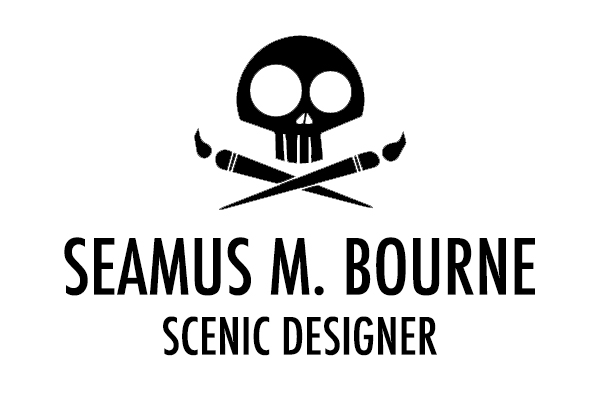Statement of Teaching Philosophy
Theatre is a collaborative art.
Fostering this thought is paramount when educating the next generation of theatre artists. My philosophy on teaching is parallel to my design philosophy. On a very basic level, we as designers, are tasked with helping the playwright, director and cast to tell a story. Without collaboration between the creative team, the cast can’t tell the playwright’s story to their fullest capabilities. We must effectively communicate and collaborate in order to tell the best story possible. Exposing students to the design process from first read of the script to the strike of a production is how I believe collaboration is best taught.
I am a very process based designer, which I think makes me a good collaborator and educator. Working through sketches, renderings, drafting and models fosters collaboration with the rest of the creative team. When teaching the design process I think that a hands-on approach is a great way to insure that students understand why they are doing what they are doing. Each part of the design process is a communication tool. Research communicates style, sketches communicate shape, renderings and paint elevations - color, models - space and finally, drafting, the communicative language in which all of the previous steps come together to make the design come to life on the stage. When teaching theatre design, I feel that it is best to teach, mentor and lead by example. How can I expect students to go through the design process, step by step, if I don’t do it myself? As a working designer I like to involve students in my process, whether it is on productions at school or at a professional theatre. This form of mentoring allows the students to see what I do and use that as an example. It allows them to see the collaborative process first hand. Involving students in the process enables us to work as peers in certain situations. If I can provide them these experiences, it gives them in a stake in the production and it also challenges them to do their best work on their own designs.
When I teach design I also believe in teaching the process in bits and pieces, allowing the students to experience and become comfortable with the medium of their choice. Allowing students to use and then build on the skills they learned on the last project helps them see their own progress. This theory of providing students parts of the design process and giving them ‘real world’ situations to work on in class gives them a realistic setting in which to work - with the opportunity to fail (not as with a grade, but with an idea) and to re-work and rethink their choices so that they can be successful. This allows them to absorb the theories and lessons to influence their future work (both in the classroom and in the ‘real world’). One of the greatest tools we have in academic theatre is that we have the stage as a laboratory for our students to practice the skills that they learn in the classroom. Giving students the opportunity to design and build scenery or costumes and hang a light plot allows them to see how the process goes beyond the theory. Working with students in this setting means that I can offer suggestions to get them beyond their challenges - guiding them to find their own solutions - giving them ownership of their choices. The opportunity to design a realized production gives students the ability to look at their designs more critically to see what works and what doesn’t.
I also believe that history of our chosen craft is important. We can’t know where we are or where we are going without knowing where we have been. This mindset can manifest itself in many ways. From knowing the basics of period styles to having hand drafting skills before going into a three dimensional computer drafting program. Being the product of a public liberal arts education (from elementary school through graduate school), I find that interdisciplinary studies can only aid a young designer. It is essential for students to step outside of their comfort zone and to explore all facets of theatre and college life. The more a student is exposed to, the greater their both literal and figurative toolbox becomes, which in turn makes them better artists and collaborators.
